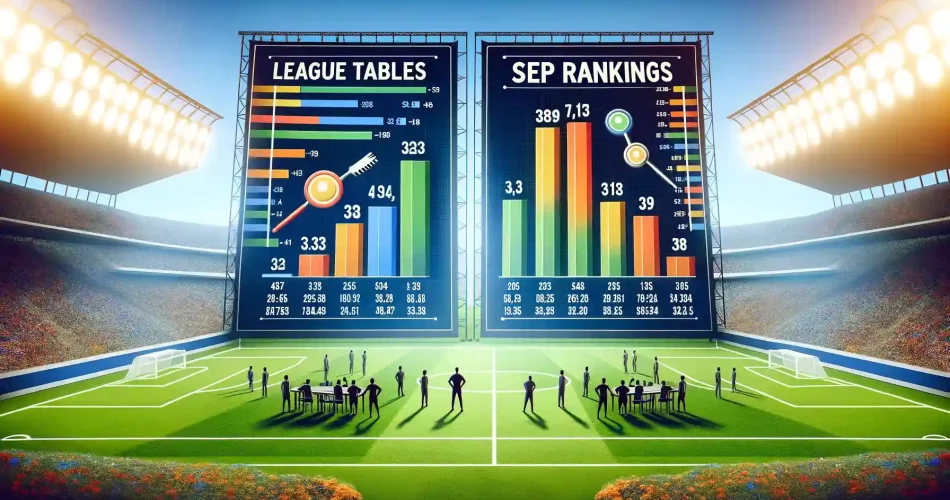Image Size – A Key to SEO Success
In today’s SEO-driven web environment, understanding the impact of image sizes is more than a visual consideration; it’s a vital component of your site’s search engine performance. This guide will walk you through the nuances of selecting image sizes that not only enhance your site’s appearance but also boost its SEO.
Standard Image Sizes for Desktop Websites
Why Standard Sizes Matter
For desktop viewing, especially at a popular resolution of 1920 x 1080 pixels, certain standard sizes ensure your website looks professional and loads efficiently. Here are some essential dimensions:
- Background Image: 1920 x 1080 pixels, 16:9 aspect ratio
- Hero Image: 1280 x 720 pixels, 16:9 aspect ratio
- Website Banner: 250 x 250 pixels, 1:1 aspect ratio
- Blog Image: 1200 x 630 pixels, 3:2 aspect ratio
- Logos and Favicons: Various sizes, maintaining clarity and brand identity
2023 Image Guidelines for Websites
Understanding the impact of image sizes on user experience and SEO is crucial. The key is finding the balance between quality and loading speed. This section will delve into the importance of choosing the right image size, considering user engagement and website performance.
Specific Image Size Recommendations
Tailoring Images to Your Website’s Needs
From the immersive background images to engaging hero images, each has a recommended size:
- Background Images: Ideally 1920 x 1080 pixels at 72 PPI
- Hero Images: Standard size of 1280 x 720 pixels, can go up to 1800 pixels in width
- Website Banners: Commonly 250 x 250 pixels, with variations for different banner types
- Blog Images: Typically 1200 x 630 pixels, with variations for landscape and portrait formats
- Logo Sizes: Usually 250 x 100 pixels or 100 x 100 pixels, depending on the shape
Mobile Image Size Considerations
Responsive websites automatically resize images for mobile viewing. However, choosing images with a 1:1 aspect ratio helps avoid distortion or cropping on smaller screens. This section emphasizes the importance of responsive design and image sizing for an optimal mobile experience.
The Impact of Image Size on SEO
Image size is a critical factor in SEO. Large images can slow down your site, affecting user experience and search engine ranking. A fast-loading site retains visitors and performs better in search engine results. Thus, optimizing image size is not just about aesthetics but also about the technical health of your website.
Choosing the Right Image Format for the Web
Choosing the right image format is crucial for SEO optimization. While formats like JPEG and PNG are common, the WEBP format is gaining prominence for its SEO benefits. To understand more about how the WEBP format can enhance your website’s SEO, check out our detailed article The Advantages of WEBP Image Format for SEO.
Additional Image Optimization Aspects
Beyond Dimensions: Enhancing Image Performance
Image compression and SEO optimization are vital. Compressing images speeds up load times and enhances user experience, while SEO optimization involves using unique images with appropriate alt tags and dimensions.
Determining Image Sizes for Different Website Platforms
Different platforms have varying requirements:
- Shopify: Supports images up to 4472px by 4472px, with a minimum of 800px by 800px for product images.
- WordPress: Generally recommends images up to 1024px by 1024px.
- Custom Websites: Often have specific guidelines provided by the developer
Beyond Size: Image Optimization for SEO
Effective SEO isn’t just about image size; it’s also about compression and proper tagging. Compressing images to reduce file size improves load times, while including SEO-optimized alt tags and captions helps search engines understand and rank your content.
Image Sizing as an SEO Strategy
In the age of digital marketing, mastering image sizing is essential for SEO. With the right sizes, formats, and optimization techniques, your website can achieve both aesthetic appeal and high search engine rankings. This guide is your roadmap to leveraging image sizes for maximum SEO impact.
